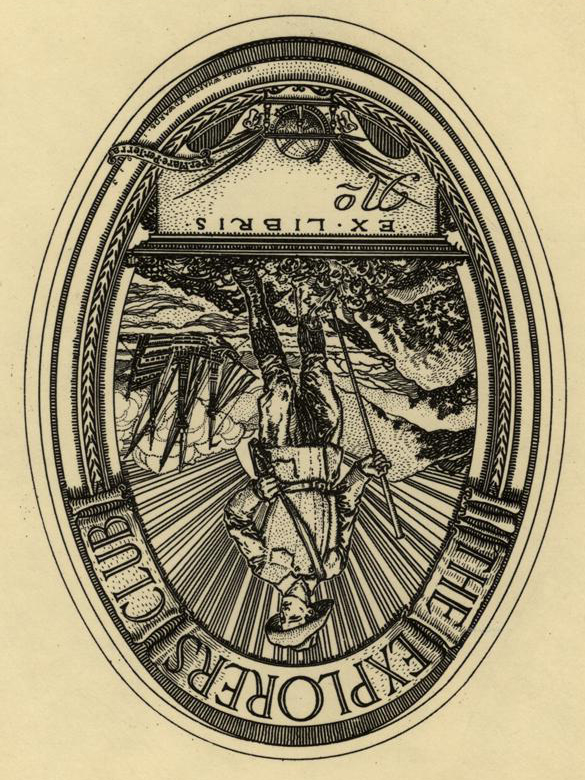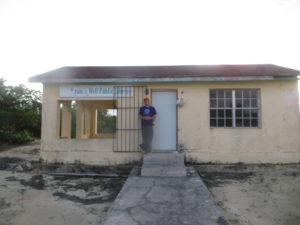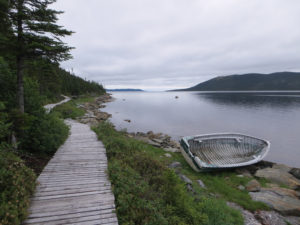Hardly anything, not even an infant asleep in a stroller, raises the oxytocin of certain people to such Everest-like heights as the sight of a wide-eyed, round-headed Canis familiaris, otherwise known as a dog. Words like lovable, adorable, and cute emerge immediately from the viewer’s mouth. But the animal in question does not have a lovable relationship with the environment. Quite the contrary. I don’t simply mean the fact that it barks at or runs after birds, especially breeding ones, thus causing a dramatic reduction in their population. I mean something far less obvious — the answering of nature’s call, an act that can transform nature itself into a veritable minefield.
In the U.S., domesticated dogs deposit approximately ten million tons of fecal matter a year in yards, urban green spaces, and forested areas. Here I should say they once deposited that amount. For dog ownership has risen dramatically during the current pandemic, and the volume of dog poop has risen dramatically as well. What becomes of that poop? Some people might think they’re being eco-minded by putting it into an aquamarine plastic bag, then tossing that bag in the trash, but they don’t seem to realize that they’re contributing to the plasticization of the planet (a plastic bag in a landfill can take upwards of 500 years to decompose). Quite a few others leave a poop-filled plastic bag on the ground or simply fling it away — are they expecting the poop fairy to remove it?
Good boy or good girl, a cute little dog’s owner might say after their canine companion has pooped. But since that typically brown, squishy poop itself isn’t cute, many owners will leave it exactly where it’s been deposited rather than put it in a plastic bag. There it will remain, slowly but surely biodegrading, and (as you’ll soon find out) wreaking havoc on its habitat as it does so. By contrast, the poop of wild mammalians breaks down quickly, and the soil benefits from their poop’s nutrients, which includes all sorts of organic matter.
Since one’s canine companion has dined primarily on processed foods, its poop contains nitrate compounds that tend to reduce the oxygen level in the soil. The change in soil chemistry can be quite harmful to plants…or I should say native plants. This change can either kill them, cause their leaves to drop prematurely, or prevent them from producing any flowers. But invasive plants have a literal field day in what might be called the immuno-compromised soil. For example, garlic mustard is far more common in areas where dogs have been walked than in other areas. Not surprisingly, those other areas are more biodiverse than the areas with dogs.

According to the FDA, one gram of a dog’s poop boasts roughly 25 million fecal bacteria, including salmonella, giardia, Staphylococcus, and E. coli. These bacteria get transported through the soil and often contaminate local groundwater, rivers, and waterways. Thus you should be very careful about your drinking water, unless you’d like to get a serious bacterial infection. And be careful what you touch, too. For in your dog’s poop reside roundworms that can cause recurrent diarrhea as well as eye and lung infections.
If you think your dog’s pee is less pernicious than its poop, you’ve got another think coming. For this pee is extremely rich in urea, an acidic compound that contains 48% nitrogen. A little nitrogen is not a bad thing, but too much nitrogen, well, consider a study done in England a while back that documented dogs peeing on lamp-posts. Constant peeing caused the bases of those lamp-posts to crumble. In 2015, a lamp-post fell onto a car in San Diego, narrowly missing the driver. In all probability, dog pee was the cause of its fall.
It’s an easy segue from lamp-posts to trees. In order to mark or counter-mark what they consider their territory, male dogs look around for something vertical, and voila! there happens to be a tree. Up goes a leg, and out shoots a flow of urea that goes down the tree’s trunk and into its roots. If enough dogs pee on a tree, it’s probably goodbye to the tree. A fungus killed that tree, a lot of people will think, not realizing that man’s (and woman’s) best friend caused the tree’s demise. It shouldn’t be a surprise that trees along forested paths have suffered more from the flow of canine urea than trees off those paths.
So what’s the best way to solve the problem I’ve just described? Perhaps exchange your dog for a more eco-friendly pet such as a goldfish or a canary? This wouldn’t work, since neither of these critters will raise your oxytocin very much. How about giving up your best friend for adoption? That won’t work, either. For you’d be simply bequeathing the dog to a different owner, who would also take it on several lavatorial walks a day.
Personally, I think the best solution is what I’ve tried to do in this essay — inform folks about the negative effect their pet dogs can have on the natural world. Otherwise, there will be more and more incidents like the one I experienced a few years ago, when I was walking through a wooded area (walking myself, not a dog) in Cape Cod. I happened to see a Labrador retriever squatting and pooping in a hemlock grove. The dog’s owner was gazing at her cellphone, oblivious to this act. Will you please clean up after your dog?, I asked her. If you don’t like dogs, you shouldn’t be in the woods, she told me. Here’s my translation of this rather abstruse statement: the environment plays second or even third fiddle to my darling doggy.



